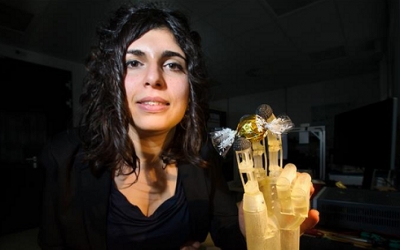- Latest news▼
-
14:37, April 16 Daily Mail: intermittent fasting is not suitable for children and women before their periods

-
16:41, April 15 Cell: in carriers of defective BRCA2 gene, sugar consumption increases cancer risk

-
15:04, April 15 305 cases of measles recorded in Armenia so far in 2024

-
14:38, April 15 Food and Environmental Virology: tea contributes to effective coronavirus control

-
12:41, April 15 Daily Mail: vitamin A, B3 and E supplements can be dangerous

-
10:56, April 15 Diabetes Care: evening physical activity is good for the heart

-
08:27, April 15 Women are more susceptible to blood loss and death during bypass surgery than men, researchers say

-
18:42, April 13 WHO: Nigeria pioneers revolutionary meningitis vaccine

-
16:43, April 13 One-third of women experience menstruation-related migraines, most often during premenopause - study

-
14:37, April 12 Pediatrics: Hypoglossal nerve stimulation implant helps with sleep apnea

-
12:13, April 12 Health minister: Simulation educational center will be created, assisted reproductive technology capacity will increase in Armenia

-
17:03, April 11 BMJ: antidepressant injection 4 times reduced risk of severe postpartum depression

-
11:35, April 11 Health minister: Number of hard-to-reach medical services within state funding scope increased in Armenia in 2023

-
16:10, April 10 Breathing therapy, which is so popular in the world, is starting to spread in Armenia

-
21:36, April 9 Frontiers: sun exposure destroys skin microbiome

All materials
Researchers develop flexible and sensitive artificial hand

The prosthetic or artificial hands are useful in regaining normal hand movements. However, these prosthetic hands are made of electric motors, pneumatics or any other machinery that makes these hands, in some cases, heavy, inflexible, expensive and loud. In order to address these issues, researchers from Saarland University have developed an artificial hand made of ‘nickel-titanium alloy’ wires, also called ‘shape-memory alloy (SMA)’ wires. This relatively flexible and lightweight hand prototype moves its fingers via SMA wires that acts like natural muscles and helps the hand to perform precise and accurate movements.
The advantages of using SMA wires are that they are light, flexible, highly adaptable, operate silently, cheap to produce and can perform without additional equipment. As these wires have highest energy density of all known drive mechanisms till date, they are able to carry out powerful motions in limited spaces. Instead of using single SMA wires, the team has used many bundles of the ultrafine wires whose diameter is similar to that of a cotton thread. Moreover, these bundles have the tensile strength of a thick metal wire. While exerting a high tensile force, each bundle can quickly contract and relax owing to the rapid cooling that takes place when heat is dissipated through the individual wires having greater surface area. The speedy contractions and extensions of the bundles are equivalent to those noticed in human muscles. The multiple strands of SMA wire also connect the finger joints of the hand. They act as extensor and flexor muscles that allow each finger to both curl up and open readily.
According to Professor Stefan Seelecke, the head of the team, a semiconductor chip is used for controlling the relative motions of the SMA wires for carrying out the movements and the controller unit is able to interpret electric resistance measurement data for knowing the accurate positions of the wires. The system does not need sensors as the materials of the wires have sensor properties.
The development is at the nascent stage and the prototype requires further improvements by modelling hand movement patterns and exploiting sensor properties of SMA wire. The prototype will be showcased at Hannover Messe 2015, next month.
Follow NEWS.am Medicine on Facebook and Twitter
- Video
- Event calendar
- Archive
- Most read
month
week
day
- Breathing therapy, which is so popular in the world, is starting to spread in Armenia 1824
- Frontiers: sun exposure destroys skin microbiome 1346
- BMJ: antidepressant injection 4 times reduced risk of severe postpartum depression 1145
- Health minister: Number of hard-to-reach medical services within state funding scope increased in Armenia in 2023 1106
- Pediatrics: Hypoglossal nerve stimulation implant helps with sleep apnea 1006
- Health minister: Simulation educational center will be created, assisted reproductive technology capacity will increase in Armenia 971
- WHO: Nigeria pioneers revolutionary meningitis vaccine 806
- One-third of women experience menstruation-related migraines, most often during premenopause - study 784
- Women are more susceptible to blood loss and death during bypass surgery than men, researchers say 450
- Food and Environmental Virology: tea contributes to effective coronavirus control 434
- Daily Mail: vitamin A, B3 and E supplements can be dangerous 429
- Diabetes Care: evening physical activity is good for the heart 396
- Cell: in carriers of defective BRCA2 gene, sugar consumption increases cancer risk 384
- 305 cases of measles recorded in Armenia so far in 2024 377
- Daily Mail: intermittent fasting is not suitable for children and women before their periods 35
- Find us on Facebook
- Poll





